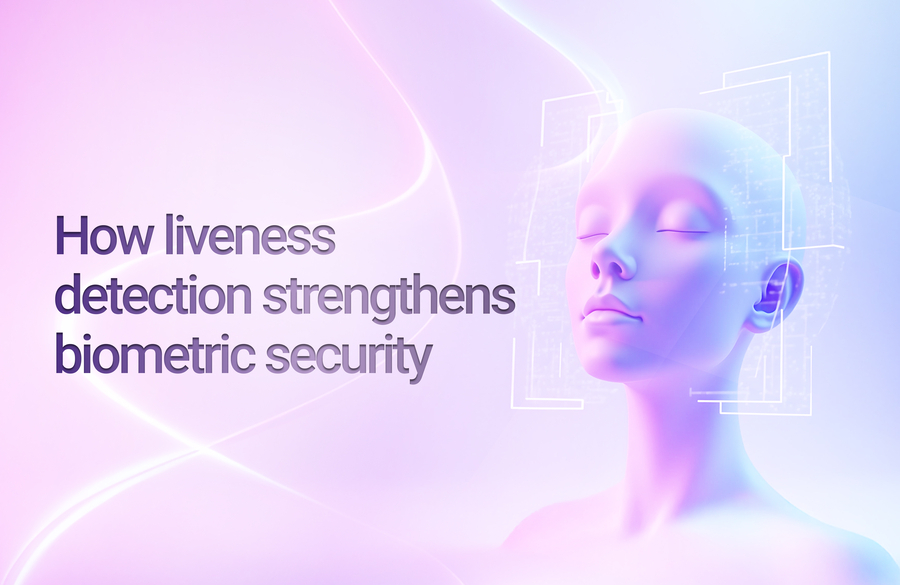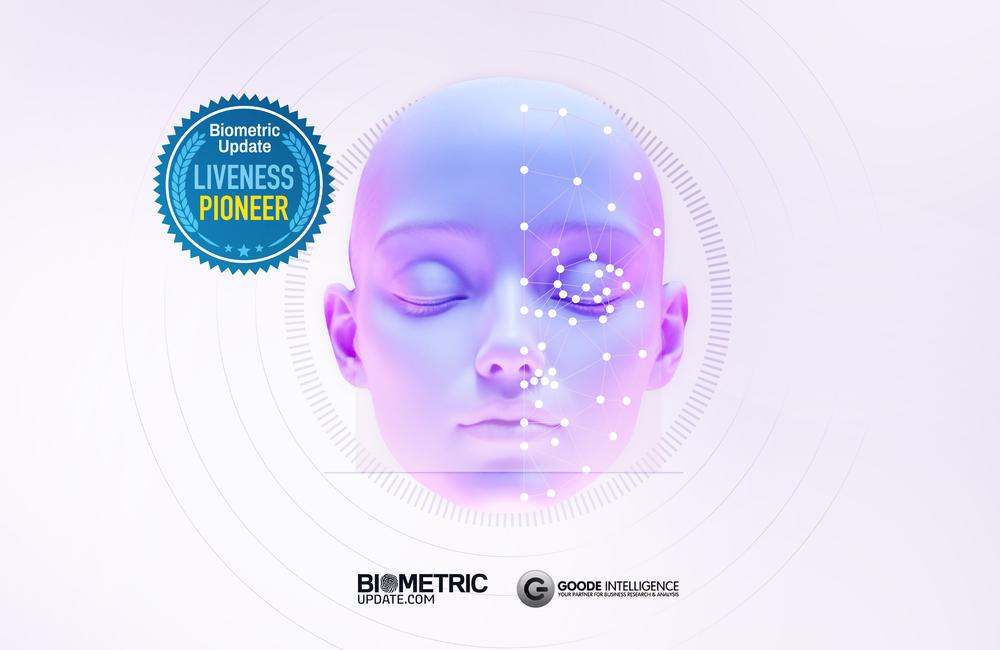Why most companies are getting biometric authentication dangerously wrong Written on

Picture this: You're using your face to unlock your phone, approve a bank transfer, or access your company's secure files. Feels pretty safe, right? Think again.
While businesses have been trusting facial recognition as their security solution, cybercriminals have been systematically defeating these systems using masks, deepfake apps, and even printed photos. The result? A massive gap between perceived security and actual protection that's costing organizations billions.
Here's what every business leader needs to know about the biometric authentication crisis and how to fix it before it becomes your next headline.
Key takeaways:
- Identity fraud reached crisis levels in 2024: Americans lost $47 billion to fraud, with identity fraud surging 42% as global fraud rates more than doubled since 2021 from 1.1% to 2.6%.
- Traditional facial authentication is dangerously vulnerable: 73% of basic facial recognition systems can be defeated by static images, while advanced deepfakes fool even sophisticated systems 67% of the time.
- Hybrid liveness detection dramatically improves security: Organizations using facial biometric liveness detection report fraud attempts in only 21% of cases, compared to 70% success rates against basic facial authentication.
- The financial stakes are enormous: Healthcare data breaches average $9.77 million per incident, while financial services face $6.08 million per breach, but organizations using AI-powered security save an average of $2.2 million in breach costs.
- Implementation delivers immediate business value: Advanced systems complete authentication in under 2 seconds while improving completion rates that can go from 60% to 95%+, with deployment typically taking under 30 days.
Regulatory compliance is becoming mandatory: New laws require financial institutions and healthcare providers to demonstrate robust anti-spoofing capabilities, making upgrades essential for legal compliance.
REPORT
2025 Face Liveness Market Report and Buyer's Guide
A report authored by Biometric Update and Goode Intelligence provides 2025 face liveness market insights and vendor guidance.

The scale of the problem
The numbers paint a stark picture of our current security crisis:
- Americans lost $47 billion to identity fraud and scams in 2024.
- Identity fraud surged 42% in 2024 alone.
- Global fraud rates more than doubled since 2021, jumping from 1.1% to 2.6%.
- Fake documents now account for half of all fraud incidents.
- AI-generated fraud has become a key operational challenge for most companies.
Meanwhile, the cost of getting it wrong continues to climb:
- Healthcare data breaches average $9.77 million per incident.
- Financial services face $6.08 million per breach.
- The average global data breach now costs $4.88 million.
Why current systems are failing
Most companies believe they're protected because they use "biometric authentication." But here's the reality: basic face recognition is fundamentally different from secure biometric authentication.
Traditional facial recognition systems work by comparing static images or simple live video feeds to stored templates. They're designed to answer one question: "Does this face match?" But they completely fail at the more critical question: "Is this a real, live person?"
The vulnerability is staggering. Recent studies reveal that 73% of facial recognition systems can be defeated by static images, while 45% fall for simple video replays. Even more concerning, advanced deepfake technology can now fool sophisticated biometric systems 67% of the time.
This creates a perfect storm: biometric data can't be changed like passwords, so once criminals compromise your facial template, you can't simply "reset" your face. And yet, many organisations continue to resist to upgrade and rely on outdated systems ill-equipped for today’s risks.
Common concerns about upgrading are:
- "Implementation will be too expensive" - Modern solutions integrate with existing systems within 30 days or les, and organizations save an average of $2.2 million in breach costs.
- "Users will find it complicated" - Advanced liveness detection is invisible to users, actually improving the experience.
- "It won't work across all our devices" - Most advanced solutions work consistently across smartphones, tablets, and computers.
The solution: Hybrid liveness detection
Liveness detection protects biometric systems from spoofing attempts by verifying that the person behind a facial image is physically present. The three main approaches (passive, active, and hybrid) vary in how they balance security, usability, and adaptability. Here's how they compare:
1. Passive liveness detection
Frictionless, but not foolproof.
How it works:
Analyses natural signals in a static image or video (e.g. light reflections, micro-movements, texture) without requiring user interaction.
Strengths:
- Seamless experience with no additional steps.
- Fast execution, ideal for mobile-first scenarios.
- Invisible to attackers, making pre-recorded responses harder to craft.
Limitations:
- Can be sensitive to camera quality and environmental conditions.
- May not detect sophisticated deepfakes or injection attacks without robust training and continuous updates.
Use cases:
Ideal for low-to-moderate risk use cases where user experience is a top priority.
2. Active liveness detection
More secure, but adds a layer of friction.
How it works:
Prompts the user to perform a task (e.g. turn head, blink, follow a prompt) to prove they are real and present.
Strengths:
- Stronger resistance against common spoofing attacks (photos, videos, masks).
- Easier to explain and verify in regulated environments.
Limitations:
- Slower and more intrusive.
- Susceptible to pre-recorded responses or video injection when not paired with robust validation.
- Can lead to drop-offs in onboarding or authentication flows.
Use cases:
Best suited for high-assurance identity checks with a compliant or supervised environment.
3. Hybrid liveness detection
The best of both worlds.
How it works:
Starts with passive detection and only escalates to active checks when needed — based on risk signals, environment, or device capabilities.
Strengths:
- Delivers strong security without compromising user experience.
- Adapts dynamically to the context and threat level.
- Reduces false positives and avoids unnecessary friction for legitimate users.
Limitations:
- Requires more advanced architecture and risk modelling.
Use cases:
Designed for high-scale environments where security and seamless UX must coexist — such as fintech, e-government, healthcare, and digital identity providers.
Why hybrid stands out
Hybrid liveness detection offers a context-aware, layered approach that adapts to both users and threats. It recognises that not every interaction requires the same level of scrutiny — and not every user should face the same level of friction.
|
Capability |
Passive |
Active |
Hybrid |
|
User interaction |
None |
Required |
Only if needed |
|
User experience |
Excellent |
Moderate |
Excellent |
|
Security level |
Moderate |
High |
Very High |
|
Spoof resistance |
Good |
Strong |
Robust |
|
Adaptability to context |
Low |
Low |
High |
|
Ideal for scale |
Yes |
No |
Yes |
While both passive and active liveness detection have their place, hybrid liveness detection provides the most effective and future-proof solution. It adapts to the threat environment, protects against increasingly sophisticated attacks, and does so without sacrificing the user experience — making it the clear choice for organizations looking to scale trust in digital identity systems.
Beyond security: The complete business impact
Advanced liveness detection transforms more than just security:
User experience
- Authentication completes in under 2 seconds.
- Works reliably with glasses, beards, or varying lighting.
- Completion rates jump from 60% to 95%+ after implementation.
Operational benefits
- Meets strict regulatory requirements for highly regulated industries.
- Provides comprehensive audit trails for compliance.
- Reduces customer support calls related to authentication issues.
Financial impact
- Organizations using AI-powered security save an average of $2.2 million in breach costs.
- 16-day reduction in breach identification and containment times.
- Zero fraud incidents reported by leading providers processing billions of checks annually.
The regulatory imperative
The compliance landscape is shifting rapidly. New regulations require financial institutions and healthcare providers to demonstrate robust anti-spoofing capabilities. Companies using basic facial recognition risk significant fines and legal liability as these requirements take effect.
Current compliance requirements include:
- Comprehensive audit trails for all authentication attempts.
- Data protection meeting GDPR and CCPA standards.
- Accessibility compliance for users with disabilities.
- Secure cross-border data handling for international operations.
Your next steps
The era of basic face recognition is ending. Businesses need authentication systems that can keep pace with AI-powered threats while delivering superior user experiences.
Ready to explore your options?
- Download the comprehensive analysis: Get the Face Liveness Market Report and Buyer's Guide for vendor selection insights and implementation strategies.
- Schedule a risk assessment: Identify your current vulnerabilities with a free security evaluation.
Don't wait until your current system becomes the next fraud statistic. The question isn't whether to upgrade — it's how quickly you can implement protection that actually works.
(Sources: IBM Cost of a Data Breach Report 2024 (Ponemon Institute), Javelin Strategy & Research/AARP Identity Fraud Report 2024)
Subscribe to our Newsletter!
The latest posts delivered to your inbox.






